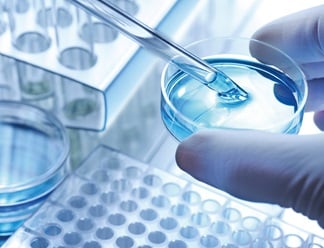HARTMANN SCIENCE CENTER

Terminal disinfection should include all accessible surfaces and things close to the patient, i.e., areas that are or could be contaminated, depending on the disease and pathogen. These include areas that are frequently touched or in contact with skin and that are intended for aseptic tasks.
Background:
The extent of the necessary cleaning and disinfection is based on recommendations from the Robert Koch-Institute (RKI), and thus determined by:
a) the probability of direct contact,
b) the possible pathogen contamination as well as
c) the patient’s level of clinically relevant immunosuppression.
Pseudomonas aeruginosa is a bacterium that thrives in wet areas. This characteristic should be taken into consideration when deciding which surfaces should be disinfected. A substance with bactericidal properties is necessary when dealing with this pathogen.
References:
KRINKO (2004) Anforderungen an die Hygiene bei der Reinigung und Desinfektion von Flächen. Bundesgesundheitsbl 47: 51–61